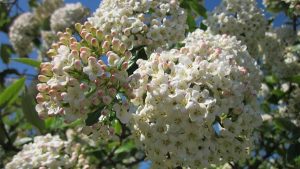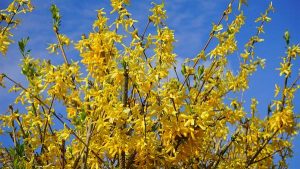The boxwood is almost ubiquitous in Connecticut – nearly every garden seems to have at least a few. They’re so versatile and attractive, it’s easy to see why they’re so popular. Boxwoods can be used as privacy hedges, edgers, even as topiaries. These easy-to-grow, easy-to-care-for plants are a gardening staple.
That’s why boxwood blight is so devastating. When it hits, it affects almost every property – and this past season, it hit Connecticut hard. This fungal disease, also known as Cylindrocladium buxicola, was first recorded in the 1990s has only been present in the US since 2011, but has spread to 22 states since then.
The rapid spread of the blight is concerning, and that speed is what distinguishes the disease from other ailments that affect boxwoods. Unfortunately, homeowners may not recognize the disease until it’s too late – that’s how quickly it infects and harms plants. The first symptoms include dark spots that grow and spread into larger brown blotches, as well as vertical black lesions on stems. The undersides of infected leaves will reveal a powdery white fungus. The disease will start on the lower leaves and work its way up, eventually causing the shrub to lose all its foliage. Boxwood blight will not kill the shrubs – but it will disfigure them significantly.
Gardeners should note that the disease affects other members of the boxwood family, including sweet box and the ever-popular pachysandra.
Prevention of Boxwood Blight
With boxwood blight becoming a growing problem in the area, property owners should be aware of the issue, as well as how to prevent and manage it; there is no cure. Like most fungi, boxwood blight thrives in moist environments. It spreads easily, so it’s recommended that home gardeners stay away from boxwood, pachysandra and sweet box after watering or rainfall since you could be the one inadvertently spreading the spores. By the same token, you may also want to clean off the soles of your shoes as you move from one part of your garden to another. (Birds may also be bringing the diseases from plant to plant, so think carefully about where you place those houses and feeders!)
As with any plant that risks carrying disease, dispose of any clippings carefully. If you’re pruning your boxwoods or cutting back the pachysandra, make sure any debris stays away from other plants in your garden – even if you think your property is blight-free. (Also, be sure to only prune or trim when plants are dry!) Obviously if you’re removing a diseased plant, the same rules apply.
In the event that your boxwoods have been impacted, consider planting a different shrub in the spot where they grew. Ilex, privet hedge, euonymus, laurel and yew are all versatile hedges that aren’t in the buxus family – and are therefore not vulnerable to the threat of this blight.
Finally, if you’re planting new boxwoods this year, consider a sunny location. The more sun your plants get, the less susceptible they are to fungal diseases. Shadier areas tend to stay damp longer, and create a more hospitable environment for fungus.
Management
Unfortunately, there is no cure for boxwood blight. It won’t kill your plants, but the disfigurement will ruin their appearance – and the risk of spread just isn’t worth it. Infected plants should be removed and destroyed. While boxwoods that have been trimmed may produce new foliage, blight often attacks and ruins new growth too. Given how contagious this fungal disease, disposal of infected shrubs and ground cover is often the best course.
Connecticut Green is committed to helping you maintain the healthiest and most beautiful property possible, and we can offer preventative sprays that can help keep your garden safe. Additionally compost tea and treatments like liquid soil drench can help keep boxwoods and other plants strong and robust.
If you have questions about the care and feeding of your boxwoods or any other shrub in your garden, please feel free to contact us. We’re always happy to help!





